Submitted by WA Contents
Miralles Tagliabue EMBT completes Maggie's new caring center with textured brick facade in Barcelona
Spain Architecture News - May 23, 2019 - 01:36 16082 views
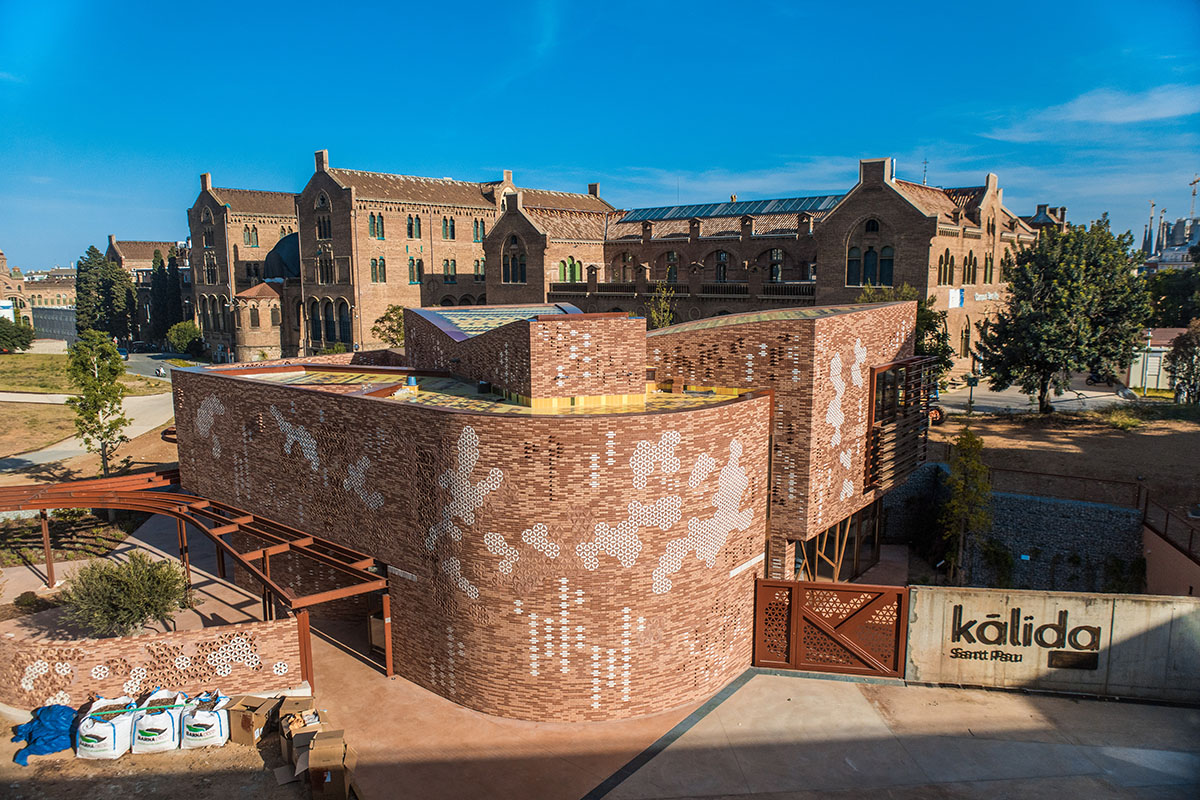
Barcelona-based architecture studio Benedetta Tagliabue – Miralles Tagliabue EMBT Architects has completed Maggie's new caring center in a UNESCO World Heritage site in Barcelona, Spain.
The new center, named Kálida Sant Pau Centre, is situated in the Art Nouveau complex of Sant Pau Hospital in Barcelona, a UNESCO World Heritage Site, originally designed by architect Domènech i Montaner.
It is the first building developed by Kálida Foundation, and the first of Maggies’s Centres in mainland Europe. Maggie’s Center is well known in UK for building quality buildings designed by renowned architects as Norman Foster, Zaha Hadid and OMA.

The interior of the building was designed by Patricia Urquiola Studio, establishing a fruitful collaboration between the two women. The building is part of Maggie’s Centres program, dedicated to the development of spaces for the caring of cancer patients, next to existing hospitals.
Maggie’s Centres offer free emotional and practical support. It is a unique building, the first in Spain of its genre, composed by a 400 sqm pavilion opened to a garden.
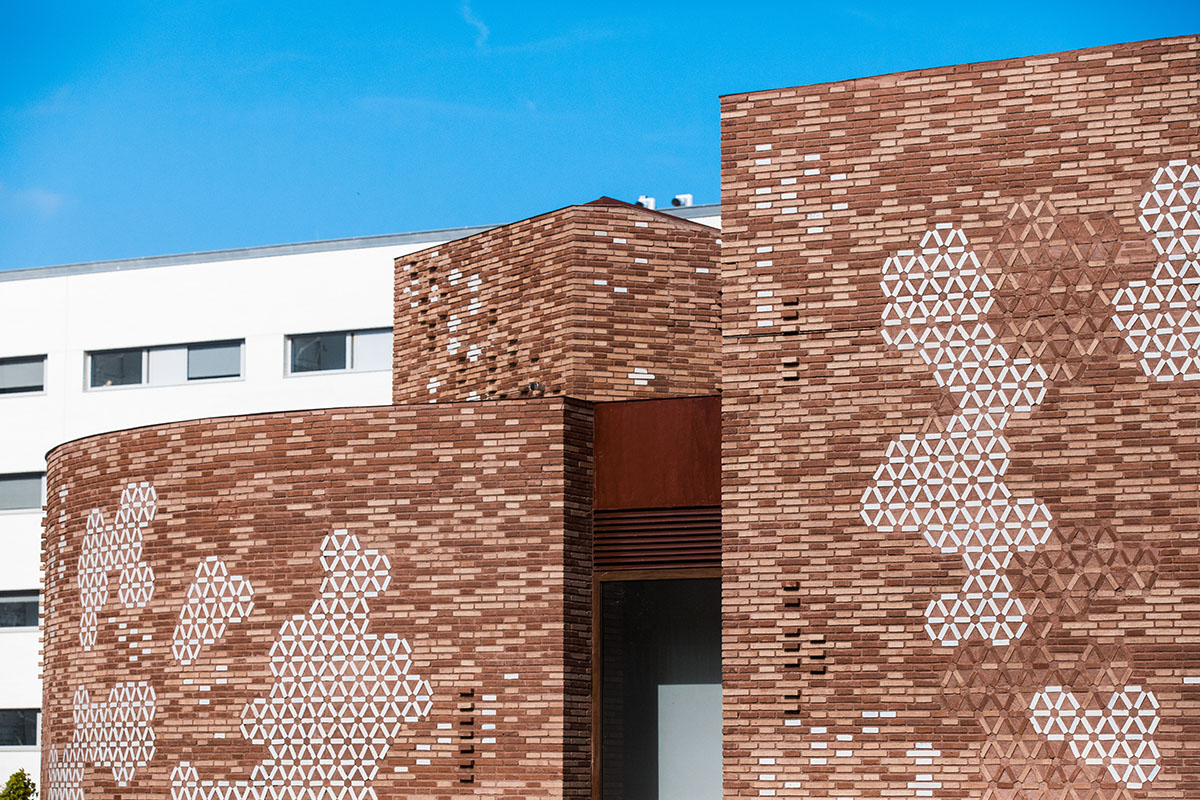
The building's exterior facade is designed with a textured brick and glazed ceramic insertions, put together in a variable composition of colours and textures.
The project develops the therapeutic and psychological dimension of the architecture integrated in landscape, to support the communities and to generate common spaces where to share their emotions and experiences.
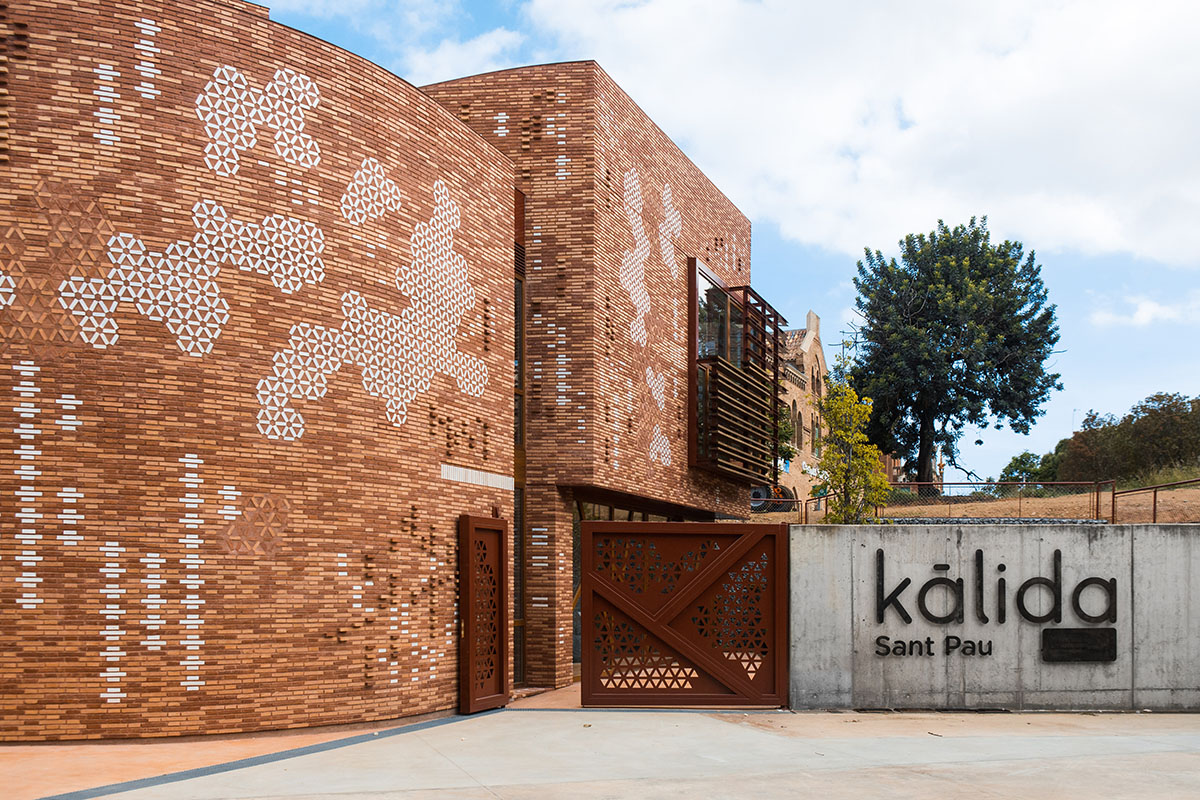
"The main objective of the project is to improve the life quality of the patients and their close families. The architect Benedetta Tagliabue has poured out her own experience in the design of the building, after living directly the disease process of Enric Miralles her life and working partner," said the architects.
"The whole project has been inspired by the richness of materials, textures, colours, geometries, drawings and greenery of the original Hospital complex."
The architect wanted to keep the full original language of Domènech i Montaner’s architecture and so it is reflected in the new gardens, the façades and the roof design.
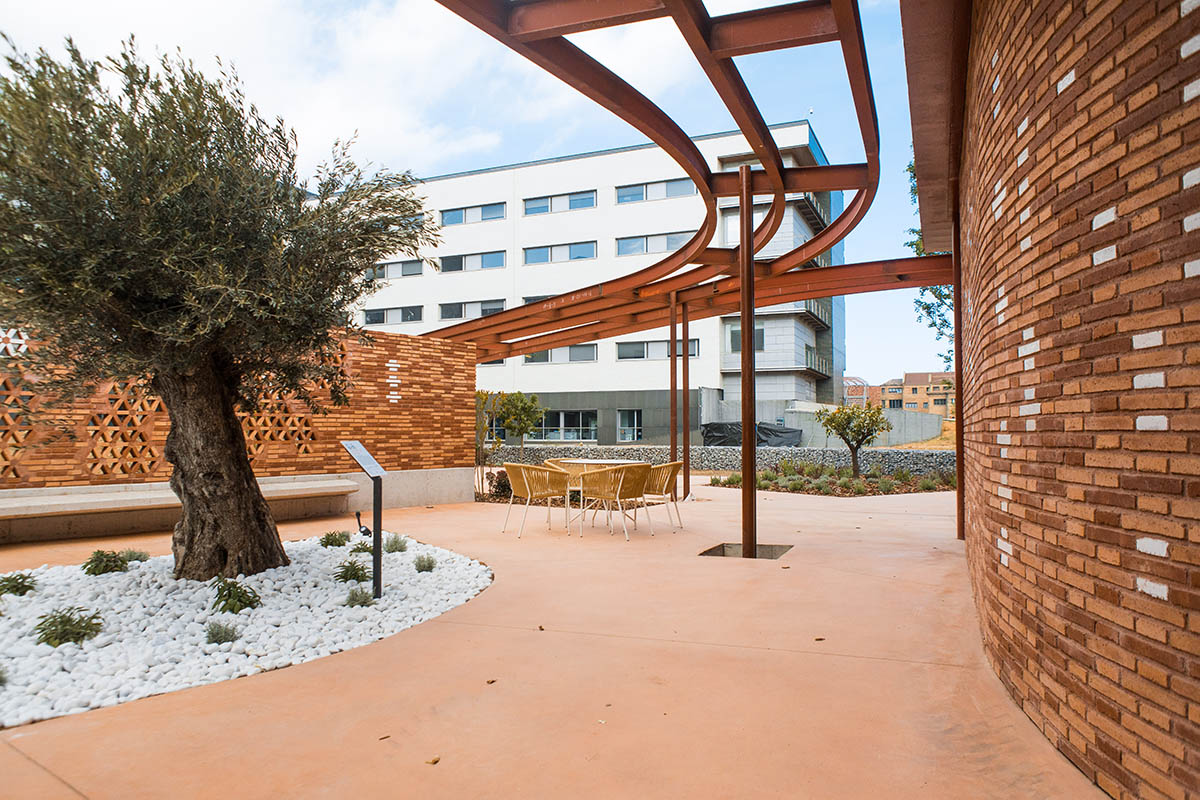
The project includes a small 400 m2 building and a wide garden within the general green area of the building complex. The fundamental idea of the project is to plant some new coloured flowers in the garden of the original hospital, and so the centre is designed as a garden pavilion where the boundaries between interior and exterior blur and vary. The building offers privacy, light, retreat and protection around the garden.
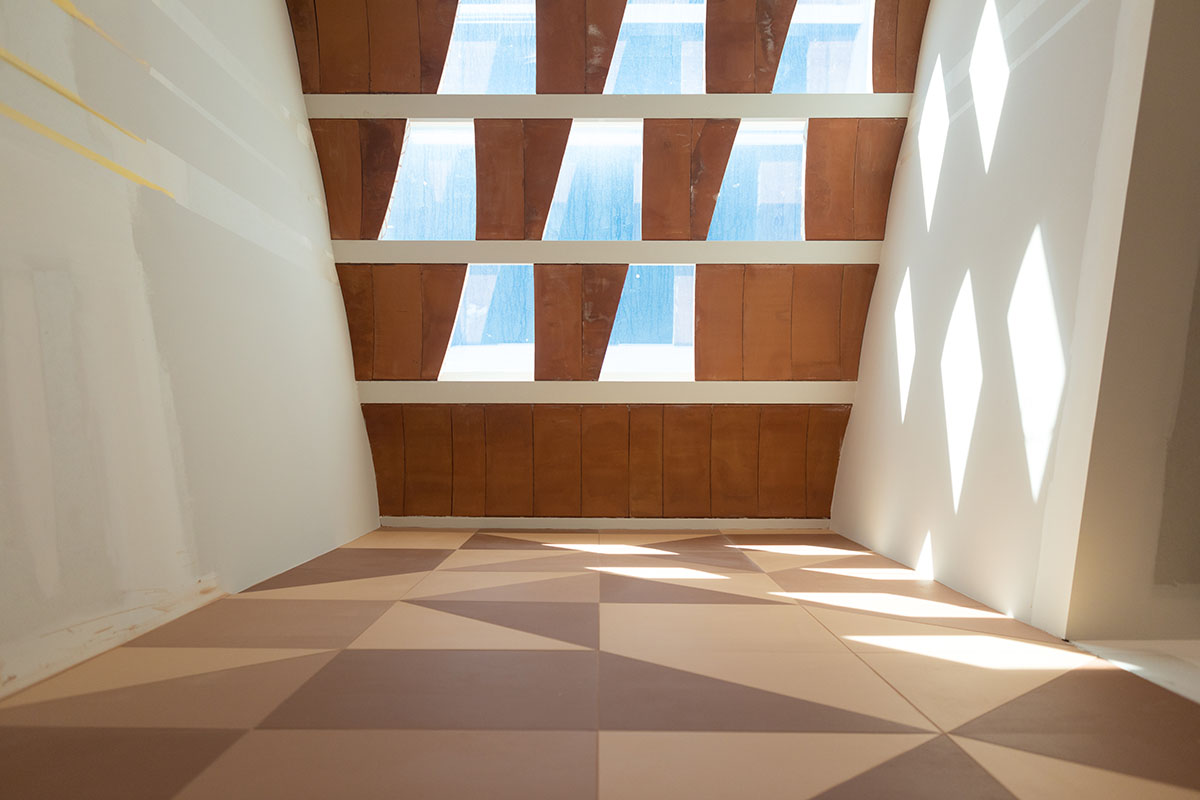
The building is organised in two floors of about 200 square meters. The ground floor is situated in a lower level than the complex around. It is conceived as a sequence of flexible spaces, opened to a garden protected by walls, pergolas and vegetation that can accommodate varied activities. In the ground floor we can find the kitchen, a hall and a high ceiling dining room, a small library and a multipurpose room.
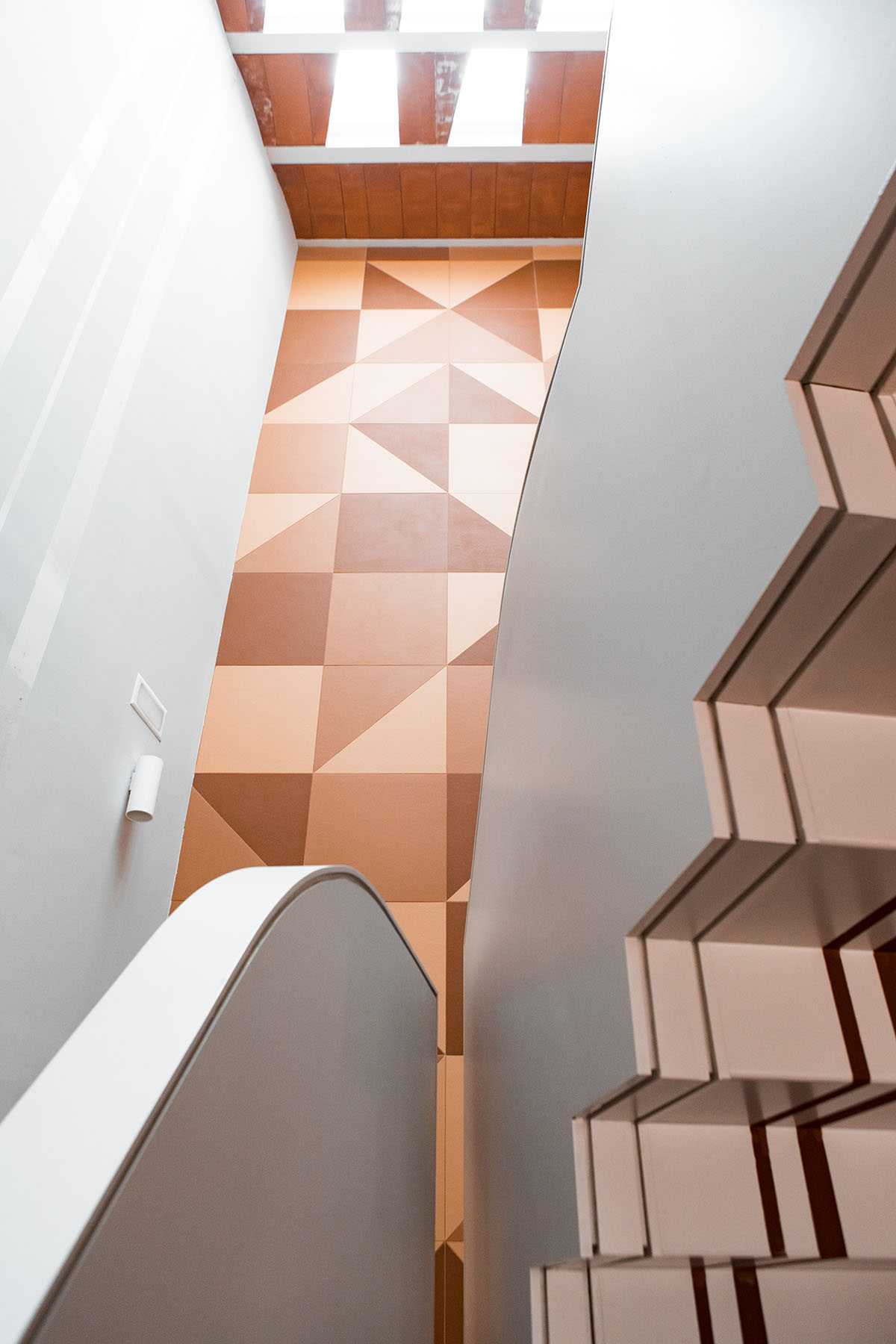
Every room is surrounded by greenery, and the situation of the patios, trees and pergolas is meant to hide the surrounding hospital facilities and to respect the privacy of the Kálida Centre users.
Here in the ground floor is the main access of the building, which has direct connection to the oncology area of the nearby hospital through a paved area between them. This area also allows the access to firefighters in cases of emergency.
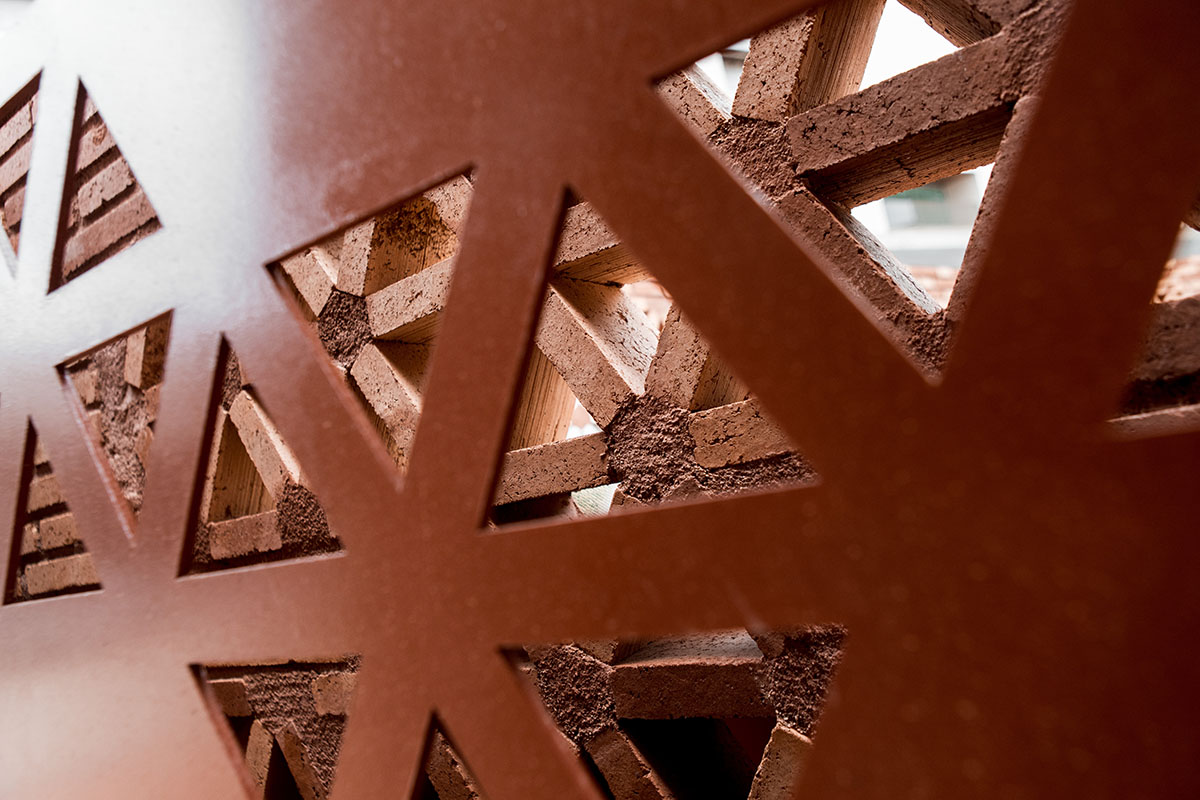
The rooms on the upper floor, situated at same height that the rest of the complex, lay around the double-height over the dining room. The façades facing the Art Nouveau buildings towards south are more transparent but protected by wooden blinds to ensure privacy.
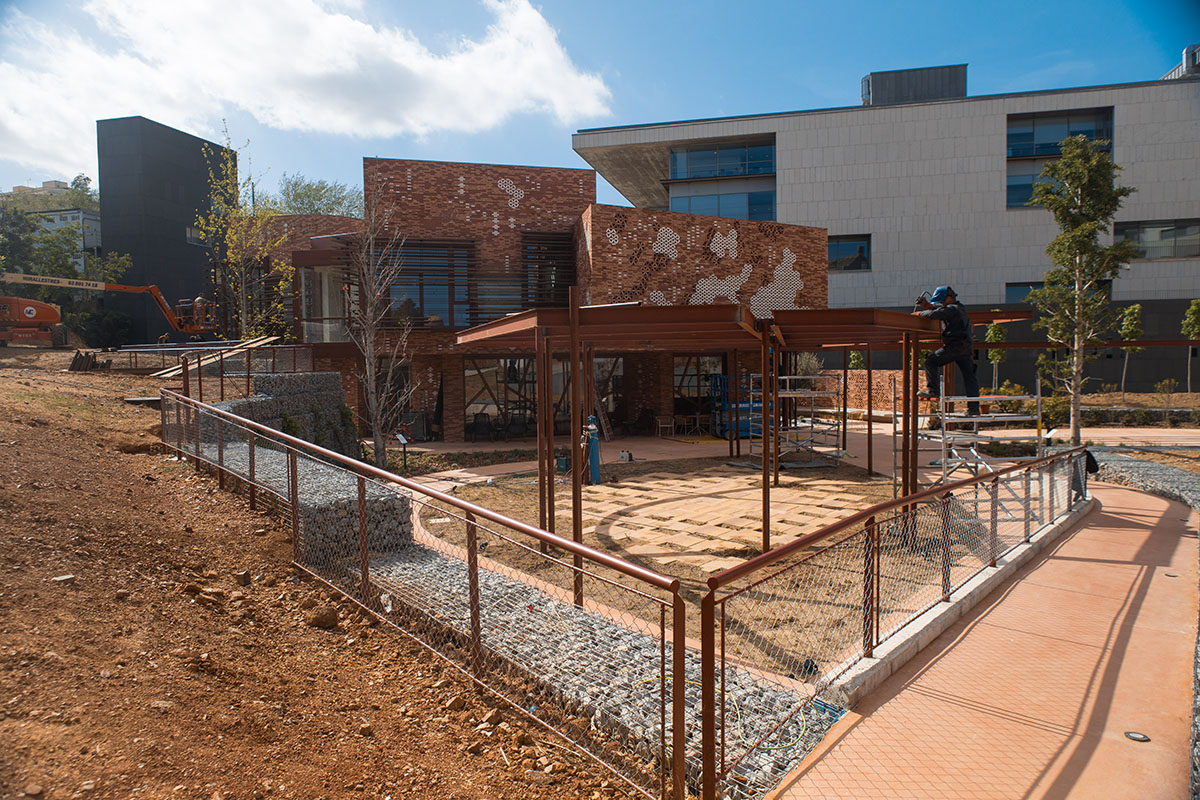
The building façade is a brick wall with glazed ceramic insertions, put together in a variable composition of colours and textures. The wall turns into a ceramic latticework to filter the Mediterranean sunlight, to focus the views of the environment, to provide air circulation and to protect the privacy of inner spaces.
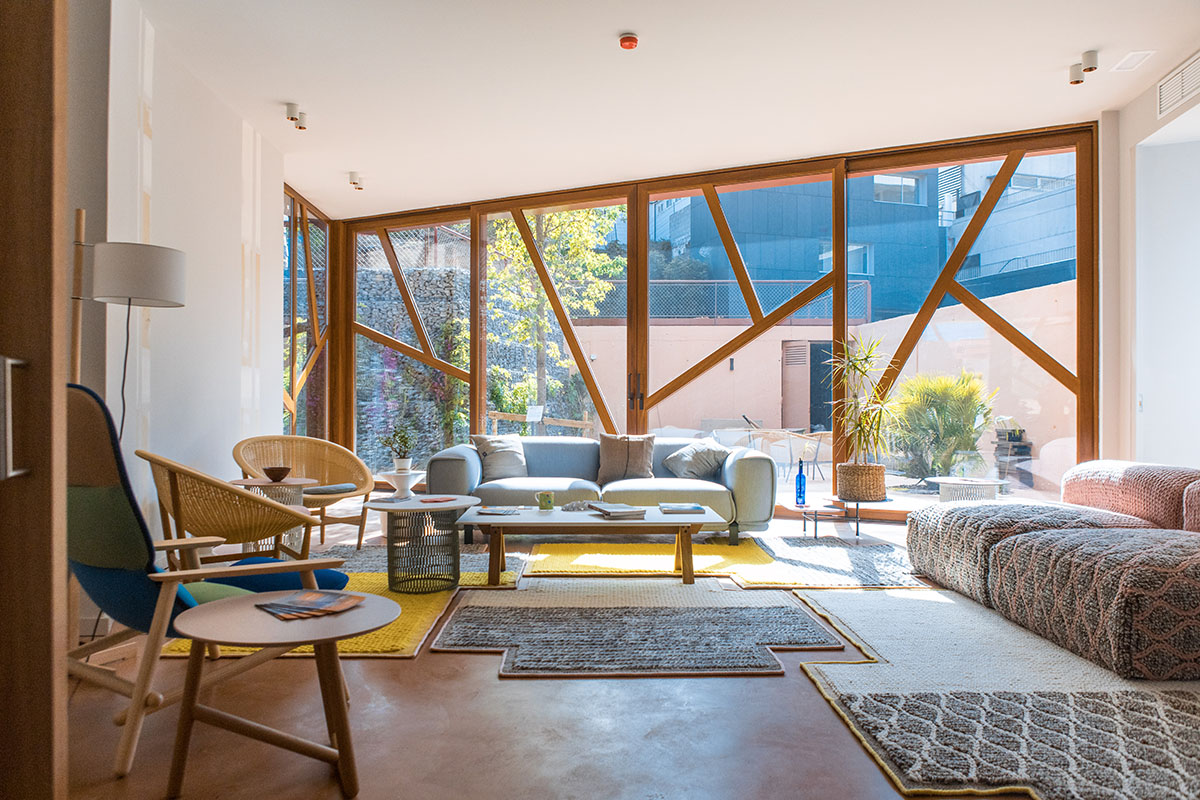
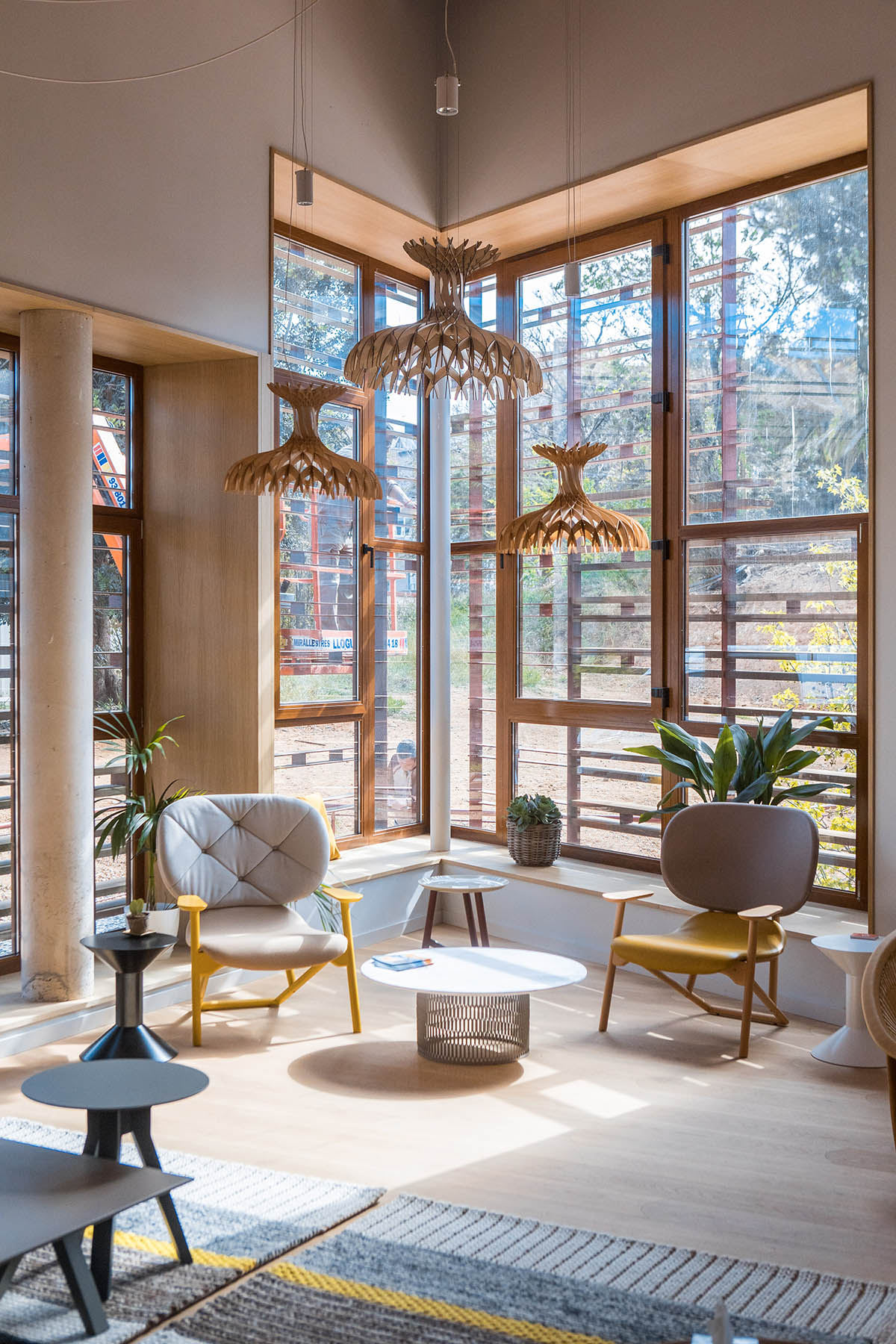
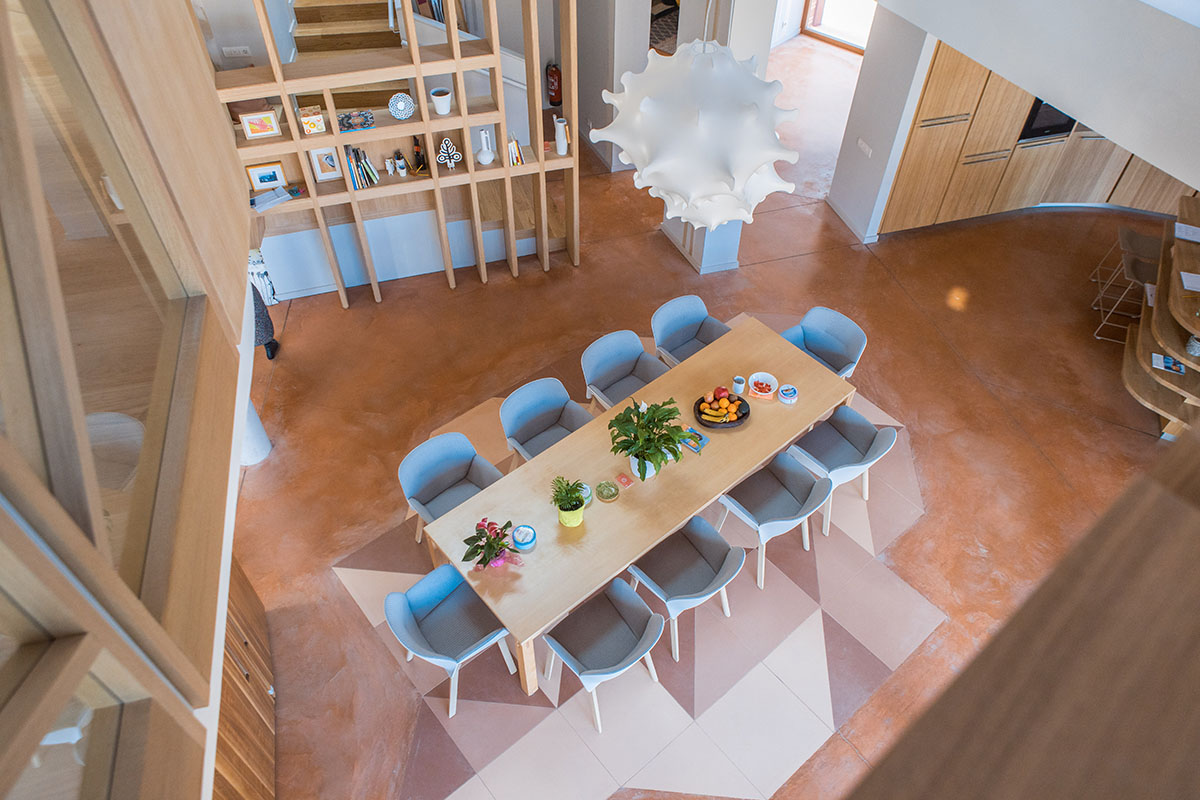
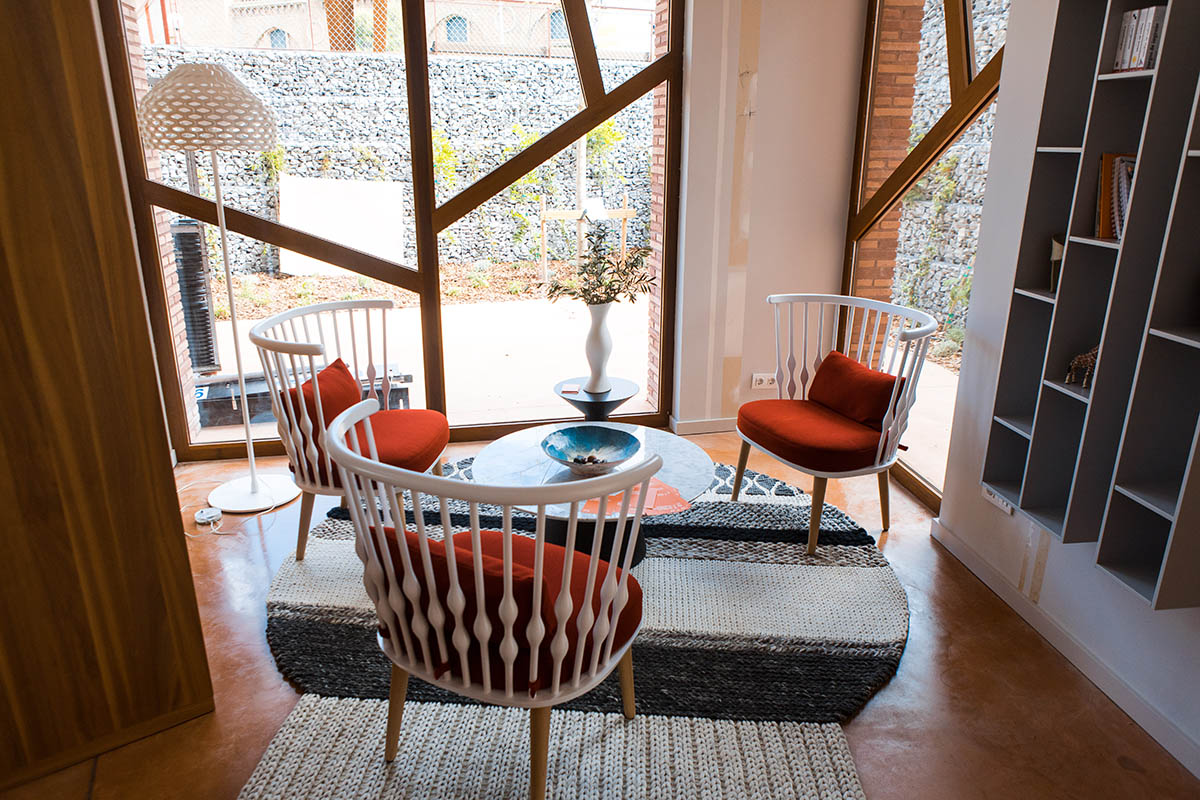
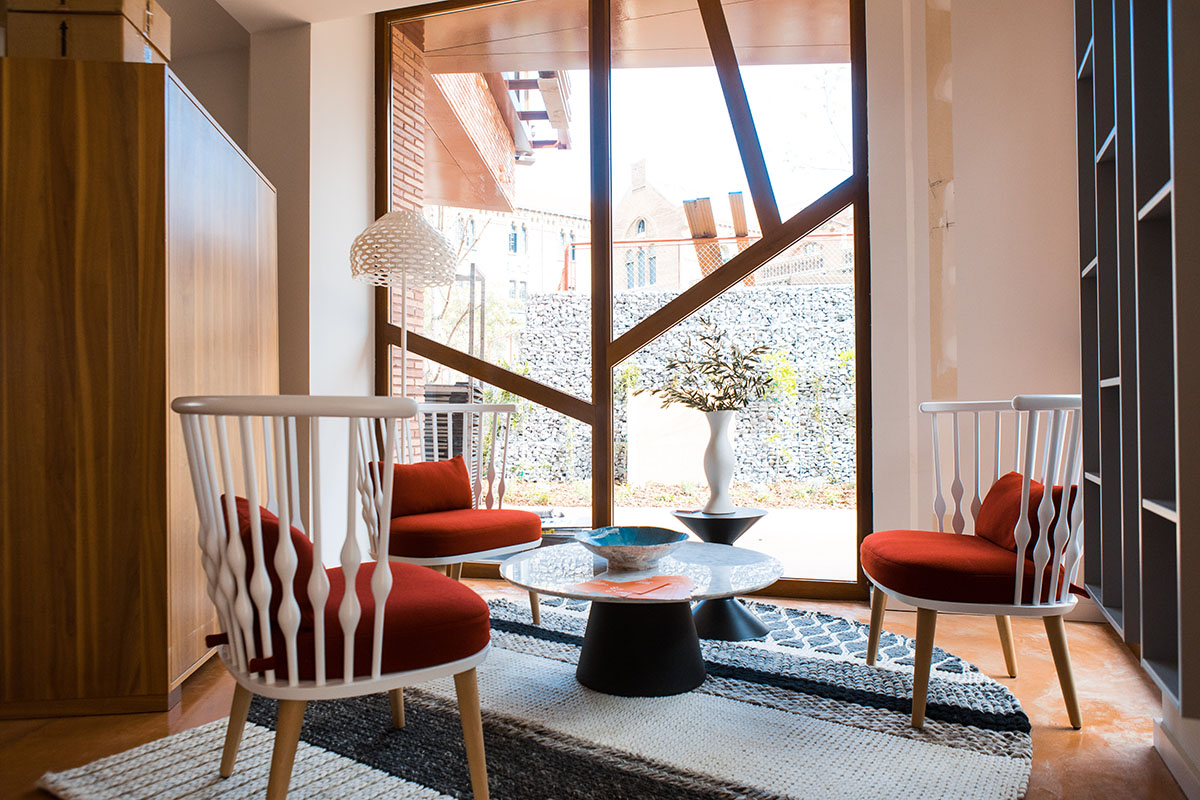
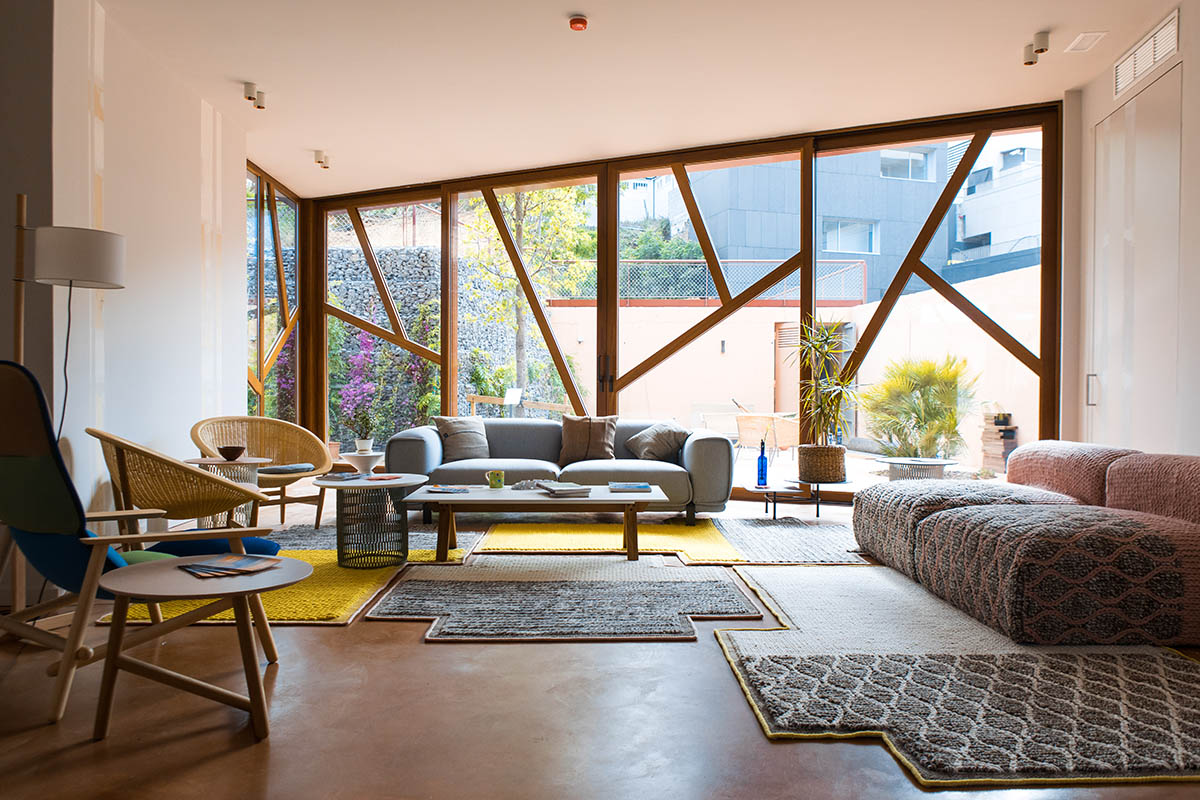
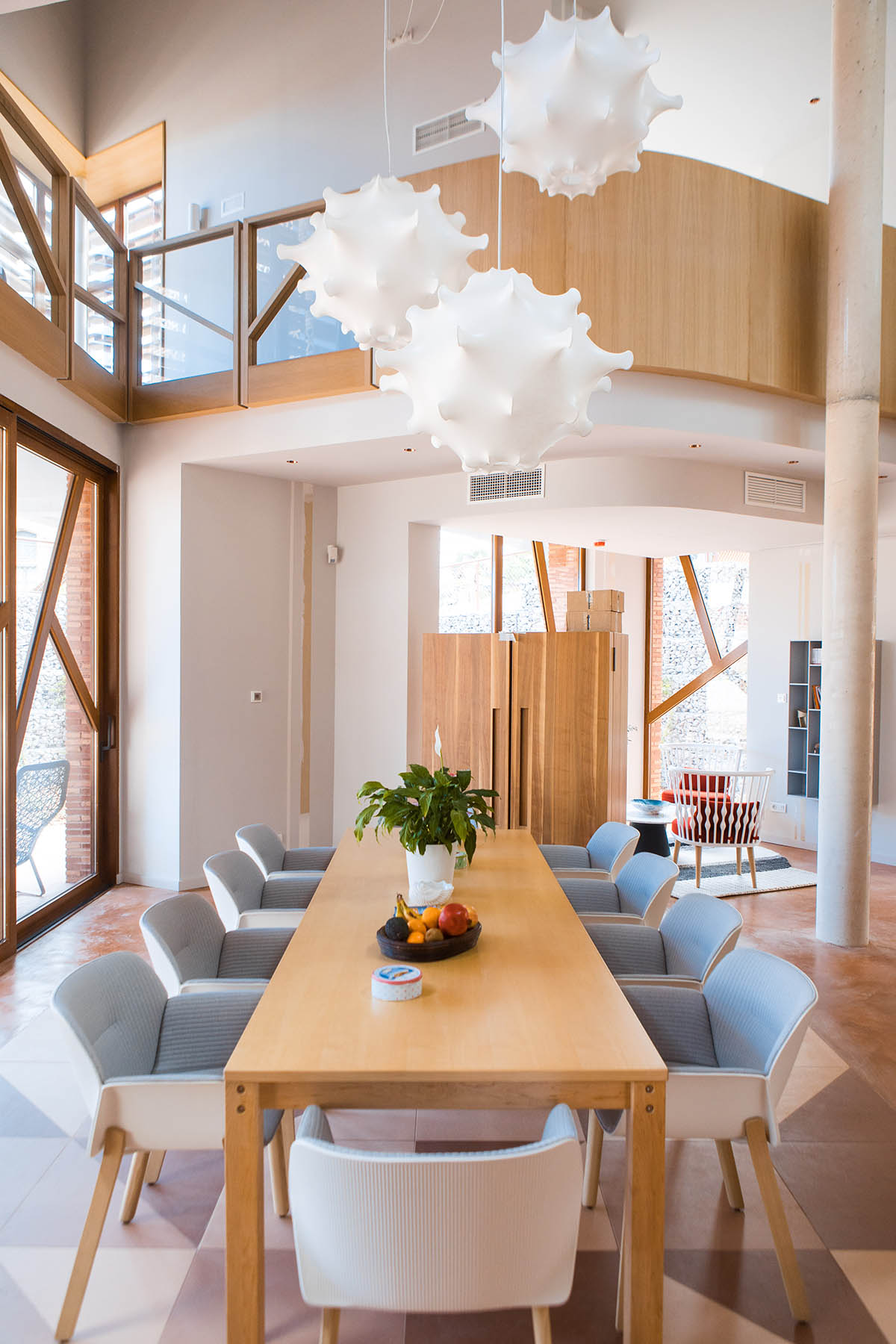
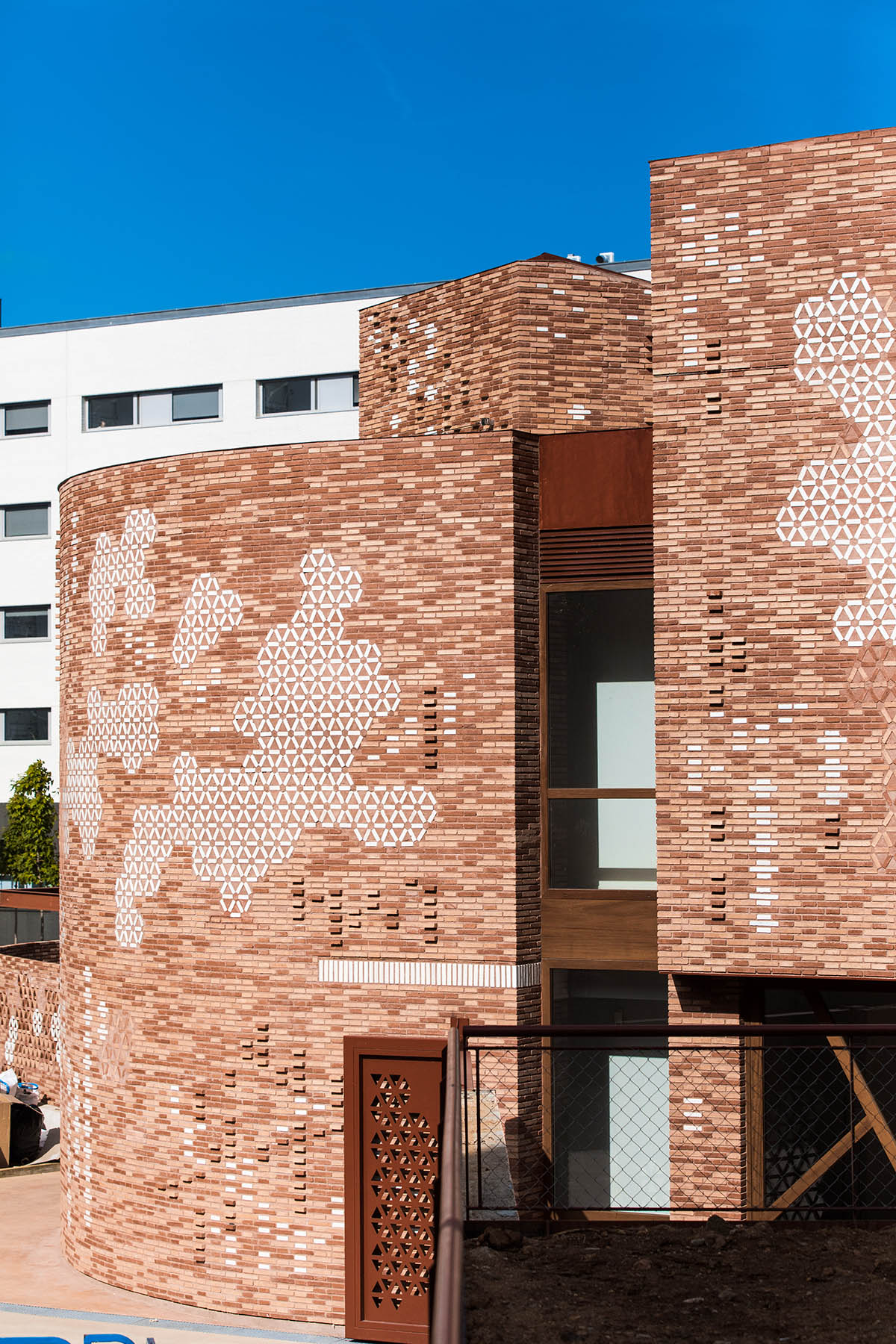
Steven Holl Architects completed a new building in the heart of London for the Maggie's Centre Barts. Foster + Partners completed a Maggie’s Cancer Centre in Manchester.
Maggie’s Centres is a Scottish foundation established in 1996 for the psychologicalassistance of people with cancer. It has produced 19 buildings across the world —designed by renowned architects alongside existing hospital facilities—, where a highly skilled staff complement the hospitals’ medical treatments.
Project facts
Architect: Benedetta Tagliabue – EMBT
Stakeholders: Kálida Foundation, Nous Cims, Fundació Privada de l'Hospital de la Santa Creu i Sant Pau, Maggie's Centres
Location: Barcelona, Spain
Project director: Joan Callís – EMBT
Project coordinator: Valentina Nicol Noris – EMBT
EMBT design team: Enrico Narcisi, Gabriele Rotelli, Marianna Mincarelli, , Paola Amato, Helena Carì, Astrid Steegmans, Liza Zanin, Federico Volpi, Letizia Artioli, Giovanni Vergantini, Paula Gheorgue, Esther Saliente Soler, Vincenzo Cicero, Sofia Barberena, Philip Lemanski, Marco Nucifora, María Cano Gómez, Carlo Consalvo, Luis Angello Coarite Asencio, Teymour Benet, Cecilia Simonetta, Edurne Oyanguren, Yilin Mao, Marilena Petropoulou, Ludovica Rolando, Mikaela Patrick, Erez Levinberg, Pablo López Prol, Mabel Aguerre.
Gross floor area: 400 m2
Outdoor area: 950 m2
Structure engineering: Bernúz Fernández Arquitectes SLP
Engineering facilities: Proisotec Enginyeria SLP
M&E consultant: PYF SL
Landscape consultant: Miralles Tagliabue EMBT
Interior design: Patricia Urquiola Studio
Main contractor: Construcciones Pérez
All images © Lluc Miralles
> via Miralles Tagliabue EMBT
